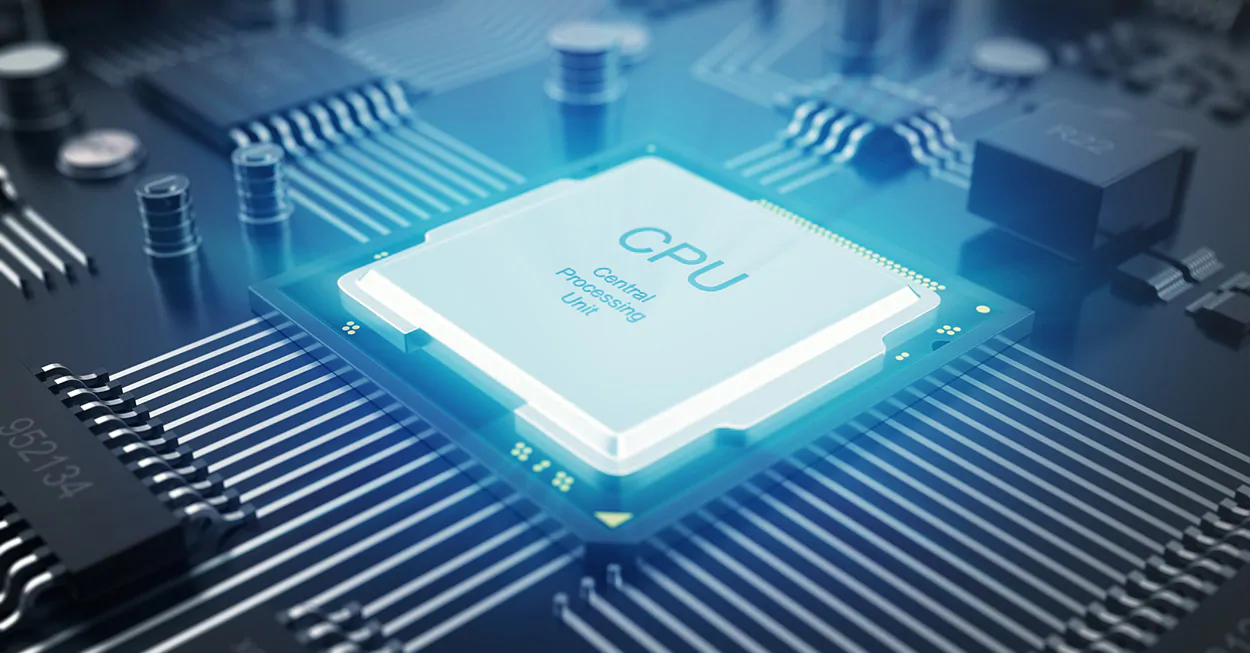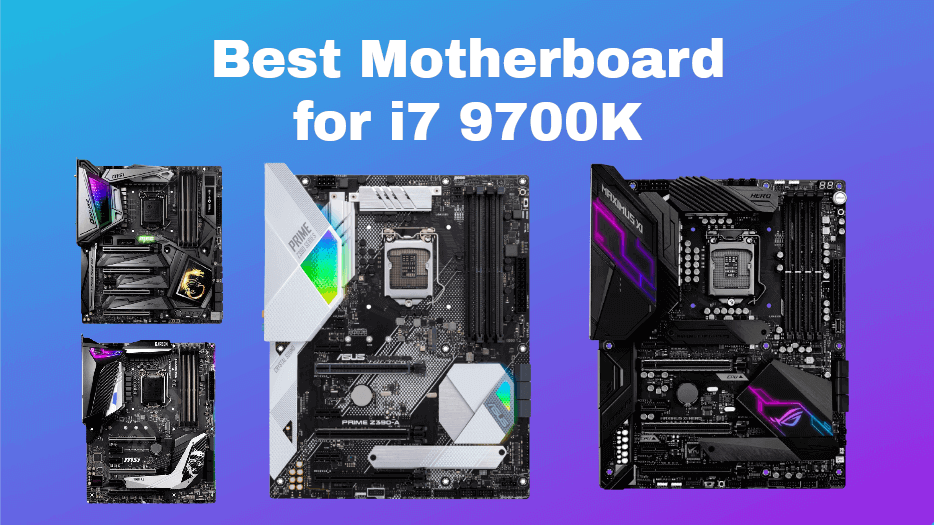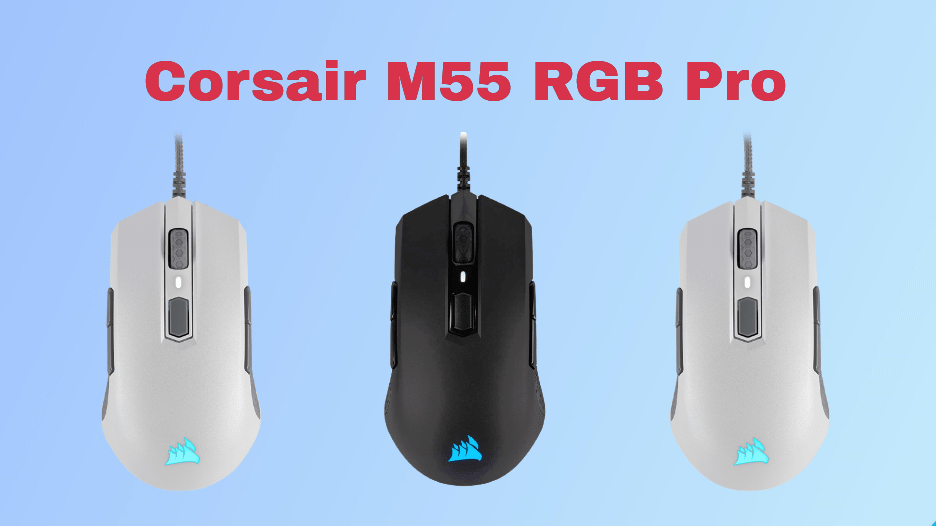Overclocking an Intel C.P.U. –Get the most out of Your Processor
There’s no exaggeration in saying that overclocking Intel CPUs is kind of more difficult than all alternative CPUs. Despite the presence of automatic overclocking software that creates the method one-button press, manual overclocking has its own perks.
But wait, before we get right into the overclocking method, there’s one thing you’ve to keep in mind.
If you overclock the processor incorrectly, there are good possibilities of the system’s premature failure because you’re truly running your Intel C.P.U. out of the manufacturer’s specs.
However, if you successfully overclock it, trust me; you can extract each single MHz out of your C.P.U. That’s quite astonishing because things get easier once the performance faces a sudden boosting jerk.
Moreover, you can apply this methodology to overclock C.P.U. Intel i5, i7, and i9 too. It goes well in all cases.
Determine the following Aspects of Your Motherboard
You know what? 2 motherboards, even by a similar complete, are never similar. makers attempt to over-elaborate things by using different terminologies for the same things.
Before we get into the method, you wish to know all the basic parts and settings of your motherboard.
- C.P.U. multiplier –Commands the exact ratio between front-side buts (FSB) and also the C.P.U. What’s the strategy? It begins by determining the frequency of the processor by multiplying the C.P.U. multiplier factor with the base clock.
For example, 4GHz is the overclock C.P.U. frequency with a base clock 100MHz and a multiplier of forty.
- Base Clock –is the CPU’s frequency at which it convey with PCIe and mem-devices. The Intel Coffee Lake chips accompany a BCLK of 100MHz.
- Voltage Mode –adds a specific quantity of voltage to the processor, regardless of its frequency. However, adaptive voltage only enhances the volts once the system is in turbo mode.
- Processor’s Core ratio –is the access purpose that offers you a selection between either you wish to set the multiplier factor for an individual core or all of them directly.
- Intel SpeedStep –keeps the load into thought and responds by lowering or increasing the voltage and speed consistent with the load.
- Load-Line calibration –provides the additional voltage to compensate the Vdroop. Vdroop is the condition when the processor is underneath load and not getting desired voltage.
- Extreme Memory Profile –allows the compatibility of the XMP profile on the memory kits.
- FCLK –takes control over the speeds of the info passing from the processor on the thanks to the GPU. the quality Intel coffee Lake processor has 800MHz FCLK.
Intel C.P.U. Overclocking method –Step by Step
Step 1 – Getting into the BIOS
You have to enter the BIOS to initiate the method. On most PCs, you can pair by hit the ‘Del key’ when you see the motherboard logo popping up on the monitor during computer start-up.
Step 2 – Enabling the XMP
The next thing, if you wish to run your memory modules at their desired speed, you've got to change the XMP. The default support memory of the Intel Coffee Lake C.P.U. is DDR4-2666.
However, if your C.P.U. has quicker memory, ensure your system’s stability before overclocking it.
Step 3 – Setting the C.P.U. multiplier
Here’s the most necessary step in setting your CPU’s multiplier to the specified overclock. But wait, there are 2 approaches to hold out this step that are poles apart.
You can add the 100MHz increments and step by step increase the frequency till it reaches the desired price. you can also create it by setting the fixed frequency price and dealing you're far and down.
Step 4 – Synchronizing all the cores
Finally, in this step, you'll opt for the C.P.U. core ratio choice to synchronize all the cores. make sure you don’t leave any processor core by overclocking it to a similar frequency.
As the place to begin, we usually recommend 1.25V for the Vcore. when it involves the Coffee Lake processors, Intel has careful the maximum voltage reaching up to 1.52V.
Trust me; such a high worth is insane because there’s a zero risk of processor cooling left behind. It’s higher to stay the worth at 1.40V to get on the safe side.
Instead of applying any magic formula, apply very little increments of 0.01-0.05V with a lot of patience.
Step 5 – Configuring mode of the voltage
The selection is yours! you've got to piece the voltage mode counting on your choice. We’ll recommend you the adaptive mode because it’s quite practical to form the C.P.U. produce less heat and consume little power. Moreover, this mode ensures your system’s longevity.
Step 6 – Setting the AVX offset
It’s time to reduce the number by setting it to -1 or -2 when the system is beneath heavy AVX workloads. can you imagine however tougher the AVX workloads hit the processor? It will, and the ultimate result's the need for additional voltage to stabilize the system.
Step 7 – Setting the LLC
There are numeric values on some motherboards to see LLC level, while some motherboards contain non-numeric values. If you’re an average user, you’d be needing an average LLC level. Experiment with all the values and fix the one that suits best on your system.
Step 8 – Setting Intel Speedstep
Set your Intel Speedstep on the enabled or disabled mode. It’s up to you! If you wish to run your C.P.U. continually at the overclocked frequency, turn on the enabled mode.
End this whole method by continuing tweaking till the way you stabilize the Vcore fully. though this method goes well with all the Intel CPUs, when we suppose to overclock C.P.U. Intel i9, the results are miraculous!
Overclocking the CPU with BIOS
The most precise and also the absolute best way to overclock your C.P.U. with the best control over the complete process is through BIOS. Here, we’ve brought you an in-depth guide to walk through the entire method.
Basic Input Output System (BIOS) is the motherboard software that loads before the OS comes into play. It permits the configuration of hardware putting in on your motherboard. It’s quite possible to manually overclock the C.P.U. by changing frequencies and voltages from the BIOS interface.
But wait! Before we get into the method, it’s imperative to know what software you’re getting to use. Intel Extreme tuning Utility is kind of suitable for beginners who had little information about overclocking.
Moreover, it’s necessary to update your BIOS to the newest version. You’ll be able to get access to all the new options and advantages of your motherboard.
Overclocking Settings
BIOS comes with intensive menus for navigation and provides access to system-wide hardware. you know what? The BIOS interface style is totally different for each motherboard, and therefore the menu layouts can vary too.
For your convenience, we’ve short-listed some necessary settings that you got to consider for overclocking.
- C.P.U. Core Voltage: It’s the quantity of power the processor is getting. Basically, after you increase the C.P.U. Core Voltage, the input C.P.U. voltage additionally increases, ultimately aiding the C.P.U. to realize higher speeds.
- C.P.U. Core Ratio: It determines the C.P.U. speed. you can calculate it by multiplying this ratio with the bottom clock speed. once either of the worth is higher, the larger are going to be the C.P.U. speed. And you can alter this setting per core or across all the cores right away.
- Ring Ratio/CPU Cache: It alters and adjusts varied C.P.U. parts’ frequency, together with memory controller and cache.
Monitor the System vitals
Before getting right into the most precision-seeking task, you have got to bring each side to light. monitoring the system before beginning the overclocking is a vital factor to try and do. it'll alter the hardware power that can ultimately impact the operating temperature.
But wait! BIOS comes with lesser monitoring choices, thus higher to go for software that operates on Windows. The Intel XTU is perfect for this task because it offers a full system tools suite.
However, you can also choose HWiNFO32, CoreTemp, and CPU-Z meant for a similar purpose.
BIOS Overclocking method –Step by Step
Once you’re finally geared-up with all the pre-settings, it’s time to move into the most method. Let’s get right into the business!
Determining the baseline performance is the initial and the most vital step when you’re overclocking with BIOS. it'll allow you to build straightforward before and after comparisons, and you’ll get to understand the precise increments.
You can’t operate a benchmark utility directly from BIOS. Instead, you’ll be using that utility from Windows. Benchmarking the hardware needs specific ways, including Intel Extreme tuning Utility software.
Keeping track of your benchmark score permits you to compare it with the most recent scores.
We have already mentioned that each C.P.U. comes with its own BIOS and hardware configuration, so you’ll see that the settings’ location is different. But, the essential concept of overclocking is the same.
Let’s simply begin right by altering the C.P.U. Core ratio that determines the ultimate C.P.U. speed. Scrutinize your BIOS and realize this section to change this setting.
But wait! while altering the processor’s operational settings, we’ll suggest you alter one setting at a time. certify you verify it before moving on to the next one.
Start modifying the C.P.U. Core ratio by moving one price upward and save the changes. Exit the BIOS and reboot the system. Once the system starts-up once more, run that changed benchmark and see if the score has been improved or not.
If the system fails to reboot or new C.P.U. settings didn’t apply, go back to the last viable settings.
Moreover, it'd be best if you altered the voltage level alongside C.P.U. settings. It’s necessary only your system isn’t stable after C.P.U. Core ratio modification. the higher the voltage, the a lot of power to your C.P.U. that can reach higher frequencies.
Let’s dig a little deeper!
You know what? you can even modify the inbuilt safeguards from the BIOS. But wait, that’s only beneficial once you’re quite assured in what you’re actually doing. If you alter the safeguard settings improperly, trust me; things can go bad and harm your hardware.
Test all the increments you created and check if you have achieved everything you’re searching for. If you discover that you restart the system with no hiccup, you’re good to go with the next step.
It’s the most anticipated moment when you’re finally about to confirm your efforts bore fruit or not. Running every benchmark you previously used while measuring the CPU’s baseline score can make sure the performance gains.
Finally, it’s time to create a comparison, and if you see visible increments, Congrats! You’re successful in overclocking your processor with BIOS. currently, you can move to the next step and guarantee system stability.
In case if you didn’t get the specified results or there’s no positive gain, you’ll have to be compelled to return to the BIOS. Repeat the whole method and change the settings to achieve the best scores.
If you would like to create your system stable in the long run and make it stand up to intensive workloads, it’s the most effective idea to perform a stress test to check the C.P.U. frequency.
Out of many stability check software choices available, you have got to decide on what suits your system best.
After Overclocking
After going through the whole method, one question may cross your mind that means to|a way to} understand if C.P.U. overclock is stable or not? There’s no higher way than a check to see the stability of the system.
If you have got followed exactly the same directions for the BIOS overclocking, your system should be stable, faster, and a lot of efficient than before.
And most importantly! If your system passes the stress test, congrats! you have got successfully overclocked your C.P.U.
How to Overclock C.P.U. without BIOS, by the way?
If you’re a beginner in the gaming world and aren’t absolutely attentive to this whole overclocking world, there’s no got to worry at all! you can boost up your system’s pace even without mistreatment BIOS.
It’s not a complicated process; actually, you have got to download software and get things underway. we usually suggest downloading Intel Extreme tuning Utility (XTU) because this program runs on Windows.
But wait! One thing you have to keep in mind is that if you would like to overclock your Core duo, even XTU won't work on it. It’s because Core duo is a C.P.U. that lacks the overclocking potential from the notch.
Overclocking AMD Processors
Overclocking on AMD processors is as efficient as on Intel processors. Once you with success overclock your AMD C.P.U., you’ll get access to out-of-the-box speeds good power.
Most of the newest AMD iterations, including Ryzen 5 3600X and Ryzen 7 3700X, don’t contain that much-overclocking potential. There are possibilities that you’ll get a touch profit out of them.
But wait! AMD precision Boost technology comes right into play during overclocking to supply you with every rate out of your C.P.U. Let’s get right into the tweaking process!
The Complete Step-by-step Guide
Step 1 –Resetting the BIOS of the motherboard
You might be desire to begin pushing the clock speeds in haste to get things done quickly. Be patient! Let’s simply begin by getting the CPU’s baseline at previous settings. Restart the system and open up the BIOS panel by pressing the ‘F2’ or ‘Delete’ key.
Here, you've got to spend a little time to know the settings layout by exploring it deeply. begin by opening the ‘Load Optimized Defaults’ possibility that you’ll see beside the ‘Save’ or ‘Exit’ button.
This option can reset the motherboard from its previous settings, and you’ll get a clean slate to figure on. however, can you forget to show the extra things off?
Here, we’re talking concerning Game Boost, precision Boot Overdrive, and alternative options that you don’t would like at the instant while manual overclocking. Save the settings and obtain away by rebooting the system.
Step 2 –How about if you run a stress test?
To make positive everything goes well at the stock settings, it’s forever imperative to run a fast stress test. This check can rule out an unstable or defective chip that will hinder your overclocking method.
You have to open the monitoring window and begin the OCCT. Then, open the table by clicking the graph icon in the toolbar. Trust me; the tabular information kind is comparatively easier to watch the C.P.U. than graphs.
Now you've got to open the ‘LINPACK’ tab and cleck all the 3 boxes, as well as AVX Capable Linpack, 64 Bits, and Use All Logical Core.
If your processor remains stable below OCCT stress, there are good probabilities that it'll stay stable during your strenuous workloads too.
Perform the check for 15 minutes. If there are not any blue screens or phase change, you’re good to go along with your overclocking.
Step 3 –CPU multiplier increments
So here’s the most vital tweaking stage –increasing the C.P.U. multiplier! Let’s get right into it!
You know what? Your C.P.U.’s speed is truly the result of the multiplication of CPU multiplier and Base Clock values. Most latest chips are returning with 100MHz Base Clock. If you multiply 100MHz x 34, maths becomes quite easier, and you get 3.4HHz C.P.U. speed.
If you overclock all the cores one by one, trust me, it offers a way powerful boost to your AMD’s performance. you've got to extend the multiplier worth slowly –also known as the Core ratio. Set the amount for initial overclocking just in case if your BIOS offers you this selection.
If we predict to overclock C.P.U. AMD Ryzen 5 2600, the good place to begin can be 37 higher than the default 34 value. you truly got to confirm your increment by researching your C.P.U.
Step 4 –Run the second stress test and reset the voltage
After setting the multiplier worth, return all the way down to the ‘Vcore’ choice to alter the voltage level. you've got to change it to ‘Manual’ by removing it from ‘Auto’ mode because the auto mode is kind of additional harmful.
Here, again correct research is the go-to thing that may allow you to confirm a perfect place to begin. Let’s take into account the case of overclock C.P.U. AMD Ryzen 5 3600! the most most well-liked and desired starting point is 1.2V, which is able to work to supply a 3.7GHz frequency.
Once you've got saved your BIOS settings, restart the system and set the OCCT once more. Run it for whole good 15 minutes, just like you did before. If you don’t face any phase change or issue, restart the BIOS and add an increment of one multiplier. Repeat the complete method to get the results.
Even if you are trying your best to get rid of that uninvited moment, for a certain purpose, you’ll get to face the dead blue screen, phase change performance, or the other error.
It means enough voltage isn’t reaching the C.P.U. for sustaining the required voltage level. so here you’ve to fuel it up a small amount additional. Add 0.01V increment in the BIOS and perform the stress check again.
Make sure that you’re noticing the results somewhere on your notepad to stay track of your improvement.
Moreover, once you’re increasing voltages, there are probabilities that the CPU’s heat level can rise too. how to address that, by the way? you've got to research your C.P.U. temperature limitation, but it’s higher to remain a step below from that too.
We typically suggest keeping the temperature below 85°C to boost the chip’s lifetime.
Step 5 –Dig a little deeper
Repeat all the mentioned steps in a very sequence by increasing the voltage and multiplier values and getting the performance-boosting up sideways. you may face very few downfalls like temperature shoot-ups or instability, but don’t panic in either case.
Note the very best reading you've got already reached. If you still desire additional performance, you can check out the following things in your BIOS.
It’s the simplest possible thanks to deal with Vdroop because it makes the voltage delivery a little additional precise. LLC comes right into play when the system reaches higher clock speeds to bridge the gap.
Moreover, LLC will lower the temperatures down when the motherboard delivers plenty of additional voltage than usual. you've got to form positive that you’re not setting your LLC not too high, or else it'll overshoot your voltage.
Do your preparation in researching your motherboard model and LLC implementations. It’s necessary because some motherboards take into account ‘1’ because the lowest setting; but, some take into account it the highest.
Do the trials and create the errors; you may higher perceive that possibility is nearest and best for the BIOS’s Vcore worth.
AMD Ryzen processors feature an infinity material design to spice up the RAM speeds –ultimately, the performance. once overclocking the C.P.U., it’s the proper time to influence the RAM speeds and potency.
You just got to enable XMP or AMP to permit your RAM to achieve the maximum speeds it’s designed to achieve rather than the bottom supported range.
There’s no would like for manually setting the RAM voltage, frequency, and timings once you have some powerful keystrokes ahead of you.
No matter what variety of tweaking you've got done to your RAM, it’s vital to convey it one round through Memtest86+ to verify its stability.
Although your tweaking already includes a vast collection of settings that can stand up to OCCT’s 15-minutes Linpack testing, we wish to form your overclock rock-solid.
Let’s simply begin confirming the stability by performing some longer tests. Run that Linpack check for 3 good hours. Even some overclocking show their actual face inside 15 minutes and fail to carry up for longer.
Overclocking C.P.U. for gaming
It’s quite realistic when we think about a gaming geek as a hyper-nerd tweaking wizard probing deeper into the heart of their gaming laptops or PCs. That’s because they crave additional and additional performance, boost-up speeds, and improved efficiency to explore the best version of their games.
Gaming and overclocking C.P.U. or GPU are the 2 nearest connected things that go hand in hand. Let’s explore some results of overclocking on a gaming computer and see if it’s worthwhile or not!
Trust me, overclocking will shoot your PC’s performance to unmatched heights. But wait, what concerning the extra heat it’s going to generate once you’re adding additional frequency and voltage to the CPU?
Of course, your system’s cooling system has to work a touch tougher to address that heat. additional overclocking, more heat, and ultimately more noise the fans can generate during their strenuous workout against heat.
If the cooling system isn’t that efficient, things get their way to hassle. And even gaming processors come with a most thermal limit of up to 100-degrees –all because of their TJMax.
When you add little increments during overclocking, the system can either shut off or send the increments back once it reaches the required temperature. It’s the best adaptation to overclock C.P.U. without harm that the majority of CPUs and GPUs come with to stop your system from crashing from thermal loads of.
Wait, wait, wait! There’s another thing to consider too! have you ever detected about the silicon lottery or limit? As you already know, each processor is built to be different from the others.
Let’s take AMD Ryzen 7 2700Xs, Intel Core i9-9900Ks, and Nvidia RTX 2080 Super into consideration. due to completely different settings interfaces, you’ll notice that they're going to overclock otherwise by reaching completely different most boost clock speeds.
All the parts aren’t potent for overclocking like others so they can move towards instability when you add additional voltage –ultimately crashing your system away. it should end in reduced performance and artifacts in your gaming.
These were all the imperfections and flaws you'll get out of your silicon chip because there’s really no way to understand that what your system is up to. the selection is yours! If you're keen on taking risks, there’s no drawback in overclocking your gaming computer.
Is It Safe to Overclock Your CPU?
Here’s the most anticipated thing! Despite enjoying all the overclocking perks, we’re typically aware of our system’s health, its premature failure, and lots of more. The thought of the system’s safety continuously remains in our heads when we’re going through the overclocking method.
Here’s a giant YES! The overclocking method is entirely safe till you cross the tweaking limits. you may have heard some myths concerning the method.
Overclocking the CPU isn’t the exaggeration of frying it away. If you set the clock too high mistakenly, the system can respond by closing down, freezing, or showing a bluescreen. you can simply revert to the initial settings by bringing CMOS Reset into play.
But how can we neglect the extra stress after you add excess voltage increments beyond the system’s endurance? If we predict realistically, you’re really reducing your processor’s lifetime by 12-15 years, most likely.
Make sure you retain the cooling consider mind before you get into overclocking your gaming computer. We’d find ourselves saying that there’s nothing to stress concerning if you keep everything in precise control.



